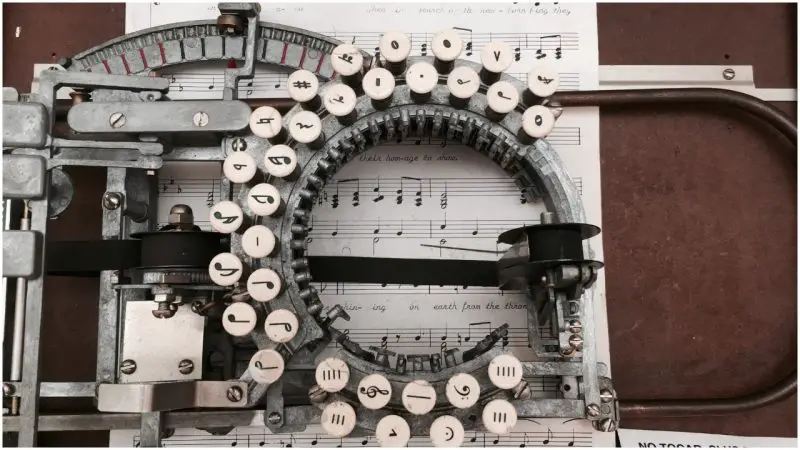Music
Rare Vintage Typewriter From The 1950’s Lets You Type Sheet Music
Sadly, there seems to be no record of how many of these machines were made but they are rare and highly sought after by collectors.

According to History.com and most historians, ‘Hurrian Hymn No. 6’ is the oldest extant song, an ode to the goddess Nikkal, composed in cuneiform by the ancients Hurrians around the 14th century B.C.
Clay tablets excavated in the 1950s from the ruins of the city of Ugarit in Syria contain the tune and an almost complete set of musical notations as well as specific instructions for playing the song on a type of nine-stringed lyre.
The Catholic Church, during the middle ages (c. 800-1450), was very powerful and controlled many affairs including music and that is where the extensive and meticulous recording of music notation started.
During that time, only the clergy and a few others learned to read and write and their music notations during that period were written and decorated by hand in either Gothic or Roman notation, using black ink usually on vellum made from animal hide.
By the 15th century, woodblock carving was used for printing music, a laborious process, as were many that followed, but slowly and surely, the printing process improved.
Johann Gutenberg invented the printing press in 1450 which was soon used to also print music.
Although still expensive and labor intensive with having to assemble the moveable type, i.e. each, note, line, beam and so on, into a ‘puzzle’, lined up in the correct order and assembled from left to right and in reverse.
Once locked together, the printing was quick, the types were placed on the printing press, inked and pressed onto paper and, of course, larger quantities could be printed and more people could buy sheet music.
Fast forward to the 1930s, inventor Robert H Keaton was working on his new invention, a music typewriter in his home workshop in San Francisco, California. In 1936 he patented his Keaton Music Typewriter with 14 keys. He continued working on the design and in 1953 patented his upgraded version featuring 33 keys.
The machine was indeed a masterpiece of engineering with a unique circular keyboard which separated the two types of character, printing each character on a staff and showing where the next character would be printed.
“One keyboard is adapted to type one class of music characters such as bar lines and ledger lines, which, when repeated, always appear in the same relative spaced positions with respect to the lines… and a second keyboard adapted to type another class of musical characters, such as the notes, rest signs and sharp and flat signs etc., which may, when repeated, appear in various spaced positions with respect to the lines,” Keaton explained.
This new machine had a curved meter, called the Scale Shift Handle and a Scale Shift Indicator on the left of the keyboard, which made it easy to control where the notes and characters would fall on the page.
Moving the handle up or down a notch to print would adjust 1/24 inch either way and allow the character to fall one musical step either way.
While the Keyton Music Typewriter was not the first, nor the last typewriting machine invented for printing music, it certainly stood out amongst others of that era for its ingenious design and the quality of the printed results.
Sadly, there seems to be no record of how many of these machines were made but they are rare and highly sought after by collectors.
Typos, corrections and/or news tips? Email us at Contact@TheMindUnleashed.com
